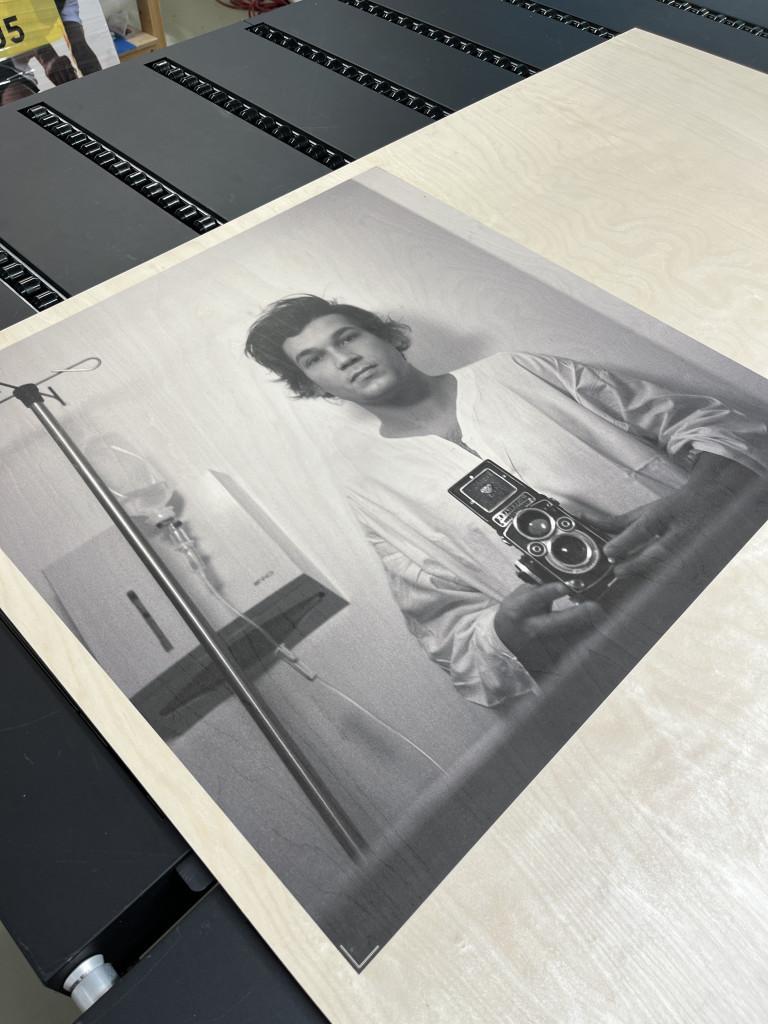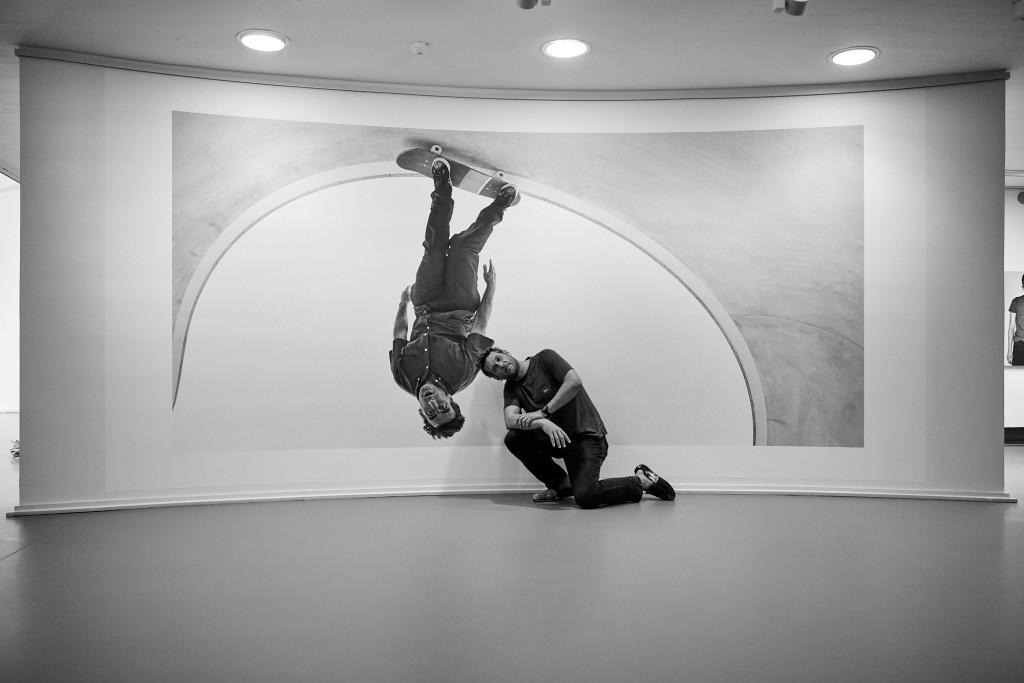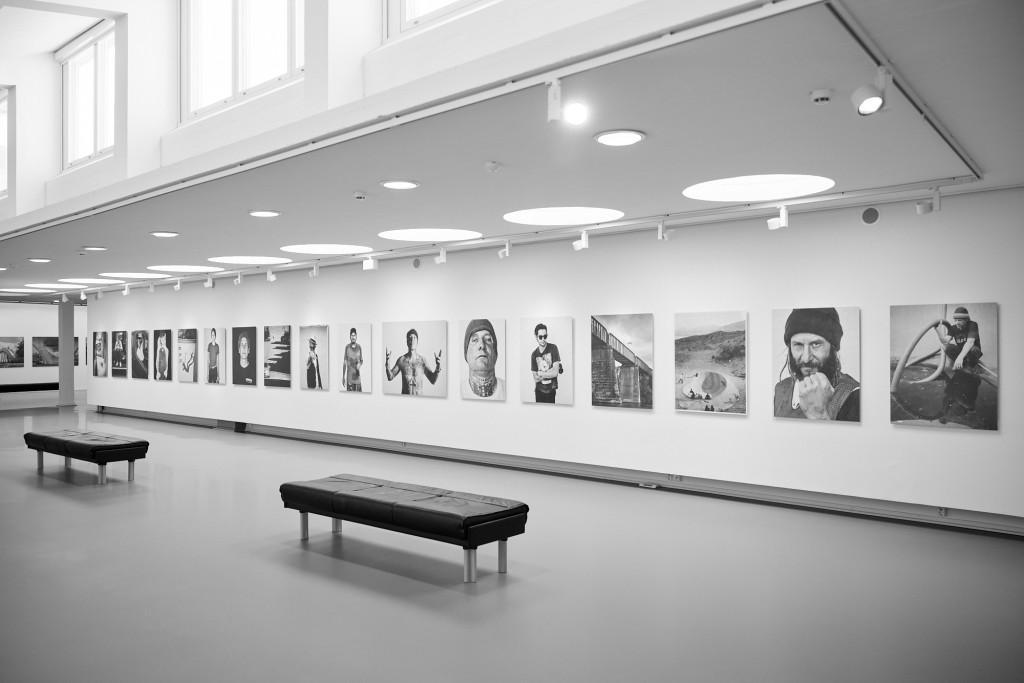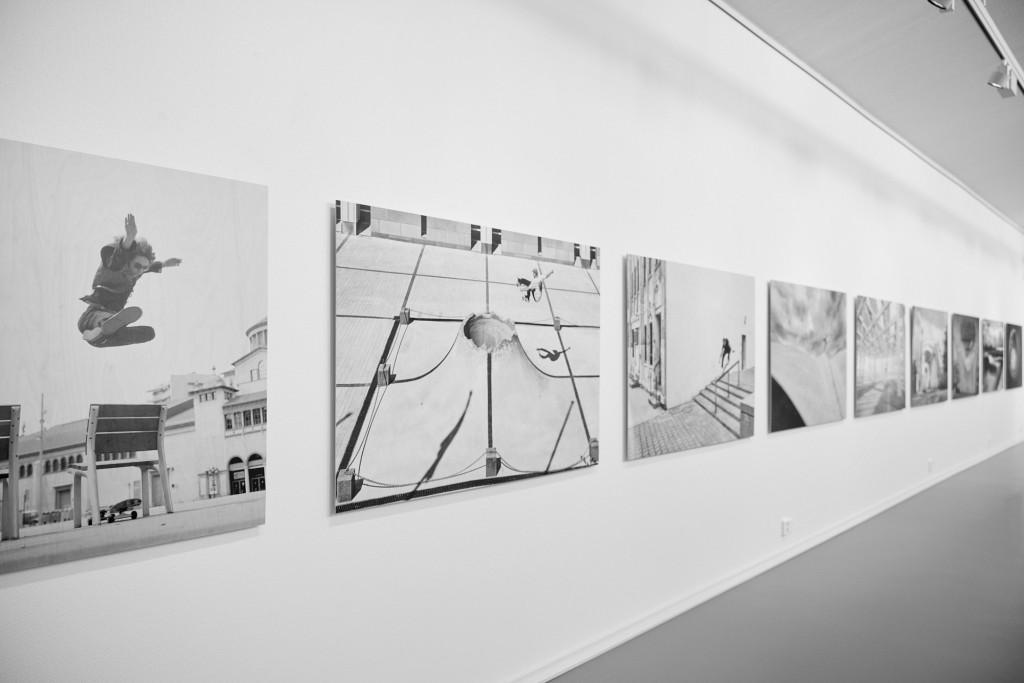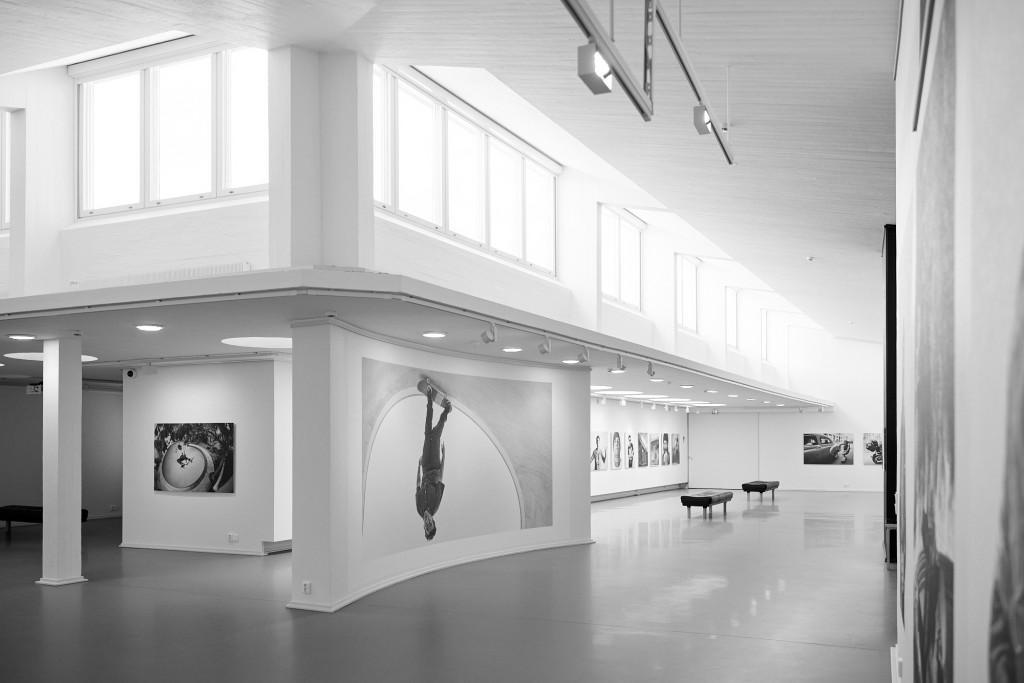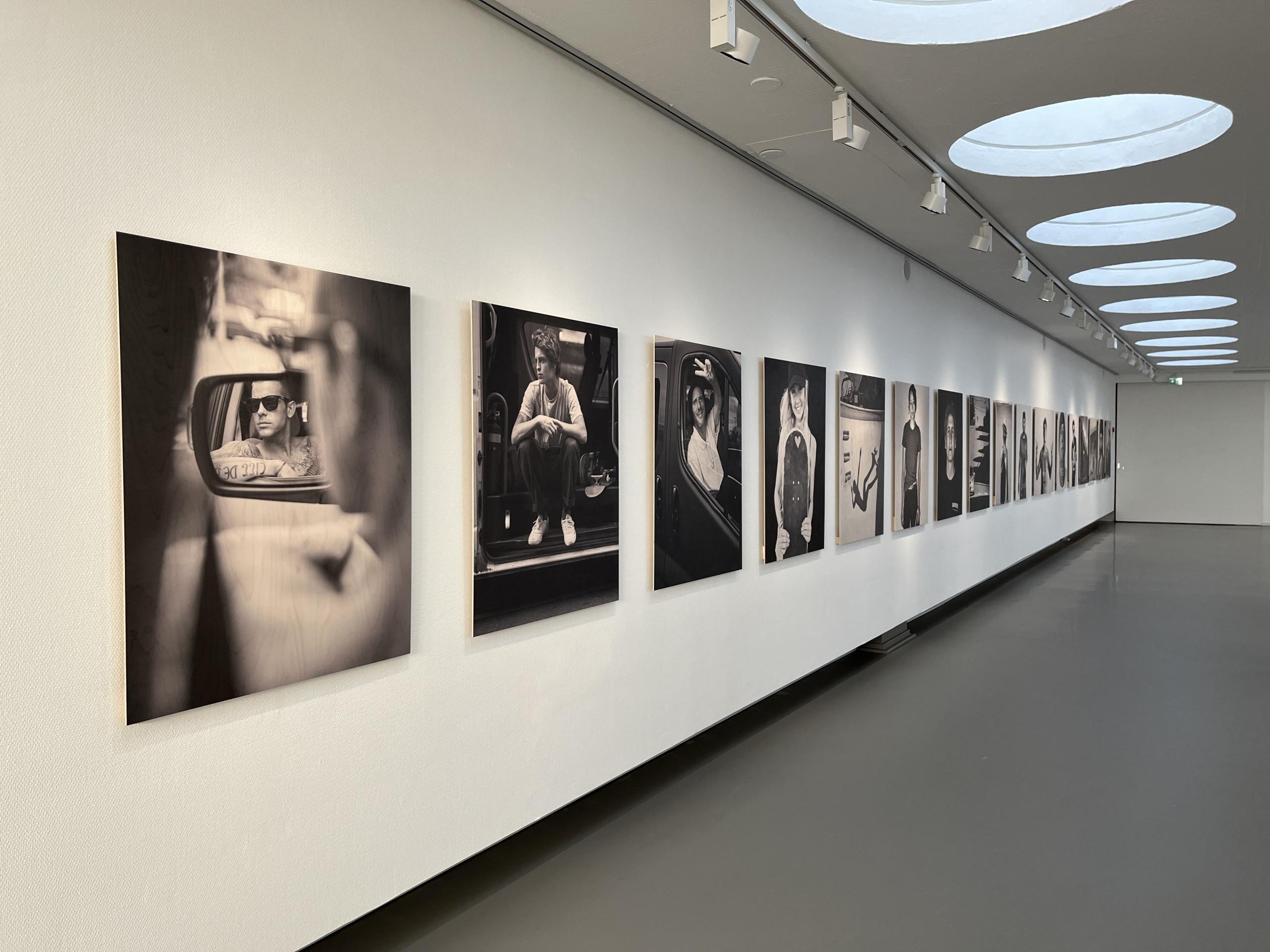
Arto Saari’s skateboard photos were printed on Koskisen’s thin plywood
In the Aalto2 museum centre in Jyväskylä, The Pool exhibition about the history of skateboarding and Alvar Aalto has opened. The exhibition consists of four independent sections, one of which has Koskinen’s photographs printed on thin veneer plywood as the main part. The pictures in the Concrete Currents exhibition are the handiwork of Arto Saari, the most famous Finnish professional chef and photographer of all time. Saari says that choosing pictures for the exhibition was a laborious process.
“The whole idea of the exhibition stems from the origin of the swimming pool designed by Alvar Aalto, but I wanted to show more skateboarding and how it has developed over time. A wooden children’s toy has become an Olympic sport,” says Saari.
Arto Saari’s exhibition was produced by the Museum of Central Finland, whose senior curator Ilja Koivisto acted as curator for the exhibition and participated also in selecting the works. “However, we gave Arto a lot of freedom in the selection of works”, says Koivisto.
While choosing the 40 or so images that ended up in the exhibition was laborious due to the abundant source material, the idea of printing on thin veneer plywood was already clear from the very beginning.
According to Koivisto, the choice of Koskisen thin plywood was influenced by the domestic origin of the material and the fact that it has been the manufacturing material of skateboards.
“Furthermore, our partner Alvar Aalto Museum had good experiences with using thin veneer plywood as part of the exhibition ensembles”, Koivisto says and continues that at the beginning there was even an idea to make hangings from old skateboards for the exhibition. Saari also stated after seeing the first test prints that he had no doubts about the perfect functionality of the implementation method.
“I love the thin plywood connection because it ties everything together. Alvar Aalto also used a lot of plywood in his furniture, and of course, skateboards are made of plywood,” Saari sums up.
Dialab‘s Petri Hintsanen, who was responsible for printing the pictures, says that he was pleased to be able to print Saari’s pictures on Koskinen’s thin veneer plywood.
“Koskinen’s thin plywood was a really good choice from the museum. When we knew that the plywood was coming from Koskisen, we knew it was going to be good stuff. When there are for example no glue spots in the plywood, it is a good thing from the printer’s point of view, because the plate can then be printed on both sides. We wanted the plates to be even extra large so that we would have room for cutting, and that was delivered successfully,” says Hintsanen.
Thin veneer plywood brings texture and a natural element to photos
Koivisto states that the museum will continue to print exhibition elements on thin veneer plywood. However, the exhibition content determines the implementation methods.
“We have the method in our toolbox, now we know the process and what it requires. If the exhibition has a theme for which thin veneer prints are suitable, we have it as an option. Thin veneer plywood is suitable for both an art exhibition and a cultural history exhibition.”
Petri Hintsanen says that thin veneer plywood is a good printing base for photos, as it is a smooth, straight and lint-free surface. Hintsanen says that his company can print on all kinds of surfaces that are less than five centimetres thick, as long as they are not greasy or fluffy. Hintsanen is fascinated by thin veneer plywood’s naturalness, softness and timelessness. According to Hintsanen in particular, lighter birch materials are suitable for all pictures and all interiors. Arto Saari also says that he can see his pictures being printed on thin veneer plywood in the future.
“I like natural elements and the texture it adds to my pictures,” says Saari.
Koivisto reminds us that it is worth setting aside time and doing tests for the use of thin veneer prints, just like when planning this exhibition. According to Koivisto, material management is important. For example, due to humidity, a bending element must be taken into account. In addition, support must be invested in case of a long-term or travelling exhibition.
The Concrete Currents exhibition can be viewed at the Aalto2 museum centre in Jyväskylä until October 27th, 2024. The Pool exhibition complex is a joint exhibition project of the Museum of Central Finland and the Alvar Aalto Museum operating in the Aalto2 museum centre.
Arto Saari – photographer and professional skater
Dialab – professional printing lab
